By Mathew Kickstein
There’s a lot to be said about cartoonist Scott Shaw!. Including the fact that, yes, that exclamation point at the end of his name is no typo.
Along the way to what has become a half-century-and-counting career toiling away at the boards for such institutional mainstays as DC/Marvel, Hanna-Barbera, and former advertising giant Ogilvy & Mather (who could forget Shaw!’s Fruity/Cocoa Pebbles commercials from the 80s/90s?), Shaw! also became one of the proud originators of the San Diego Comic-Con.
Though it’s at this global hub of pop culture fandom that the bespectacled and cherubic, t-shirt-wearing septuagenarian yearly holds court at his table (conveniently by the bathrooms and café) and hosts can’t-miss programming such as his Oddball Comics and Quick Draw panels, it may surprise readers to know that another notch on his ample belt is that of co-creator, producer, and director of Rubenesque funnyman John Candy’s early nineties Saturday morning cartoon for NBC, Camp Candy.
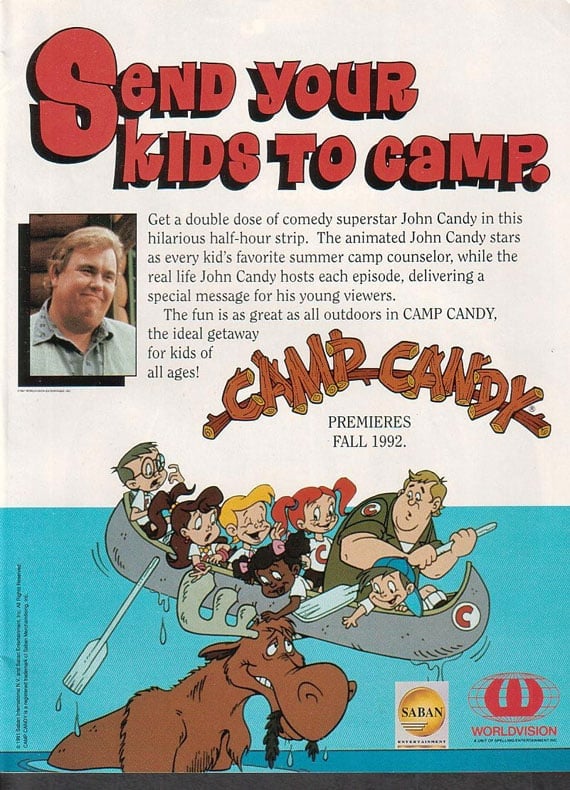
Referring to him as “the chubby, fresh-faced Shaw (sic!)” for a three-page feature spread about the “buzz-cut San Diegan” and his work on Camp Candy in 1990, the LA Times affirmed that “[l]ike many others in this somewhat eccentric field, Shaw[!]’s life has always been focused on cartoons and cartooning.”
Suggesting too that he “still thinks he’s Fred Flintstone,” the article is even headlined with Shaw!’s quote: “Heck, I even look like a cartoon.” (Not much has changed on that front over the past 35 years.)
Funnily enough, as Shaw! discloses, his cartoonish quality—inside and out—was one of the principle reasons Candy chose him to help steer Camp Candy through the choppy network waters ahead.
“Scott’s whole persona is perfect for what he does—he just knows so much about the world of cartoons and comic books,” Candy (having been an avid comic collector himself, according to Shaw!) said in the article. “He’s just a Peter Pan of sorts. He grew up in a lot of ways, but he’s still got that great edge of a kid.”
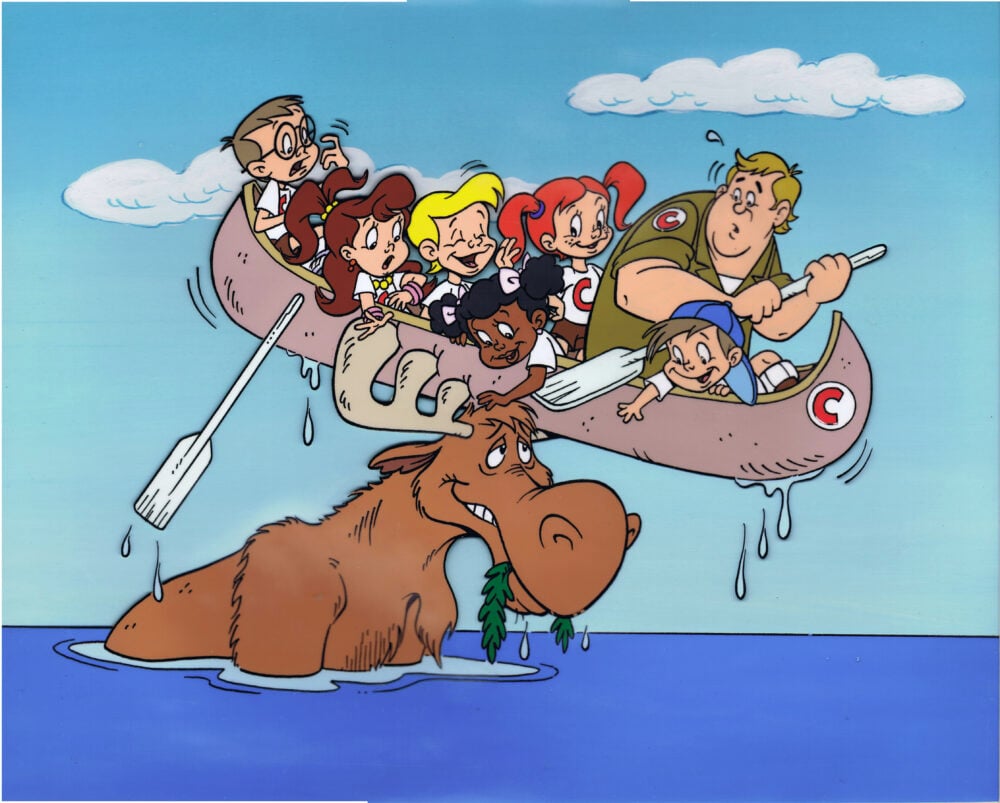
Initially connected by Candy’s fellow SCTV alumnus Martin Short—for whom Shaw! co-created and helped run his animated series based on Short’s notoriously obnoxious Ed Grimley character—Candy felt having someone who looked like a bit life himself would help drive what he hoped would be a certain integrity and authenticity on Camp Candy.
“Many years after John passed away, I learned through one of the supervising producers on the show that I got the job in the end because, at the time, I was weighing over 400 pounds (which I’ve lost half of since then!),” Shaw! reveals. “John liked that, as a fat guy like him, I would understand what it was like to live like that and how people would treat the character.”
Alas, in sitting down to talk with Shaw! about his (mis)adventures riding those aforementioned choppy network waters with Candy for what would ultimately be a three-season run, it would seem “integrity” and “authenticity” were not exactly at the forefront for NBC’s mission with the series.
As the (sadly, prophetic) LA Times feature laments, “[n]etwork license fees … dictate frantic production schedules and subcontracting most of the drawing to cheaper labors overseas. Animators produce in a number of weeks programs that once were lovingly designed over the course of several months.”
As far as what it took to put the series together with one of modern cinema’s most iconic and beloved comedic actors, Shaw!, in customary unabashed fashion, didn’t mind letting it all out—the good, the bad, and the funny.
MATHEW KLICKSTEIN: From what you’ve talked and written about in the past about the origins of Camp Candy, would you agree there were some network retooling shenanigans right from the start?
SCOTT SHAW!: After getting the call from an executive at [animation studio] DIC that they wanted me to produce and direct a new series starring John Candy, I signed on immediately. I got started on the concept right away, which [co-production studio partner] Saban had at first pitched to NBC as an animated adaptation of Alan Sherman’s most famous novelty song “Hello, Muddah, Hello, Faddah (A Letter from Camp).”
I honestly don’t know what happened to that original idea, and the show turned into what it became, still a camp for kids, but now headed by counselor John without reference to the Sherman song. So, yes, right away things were already a little weird.
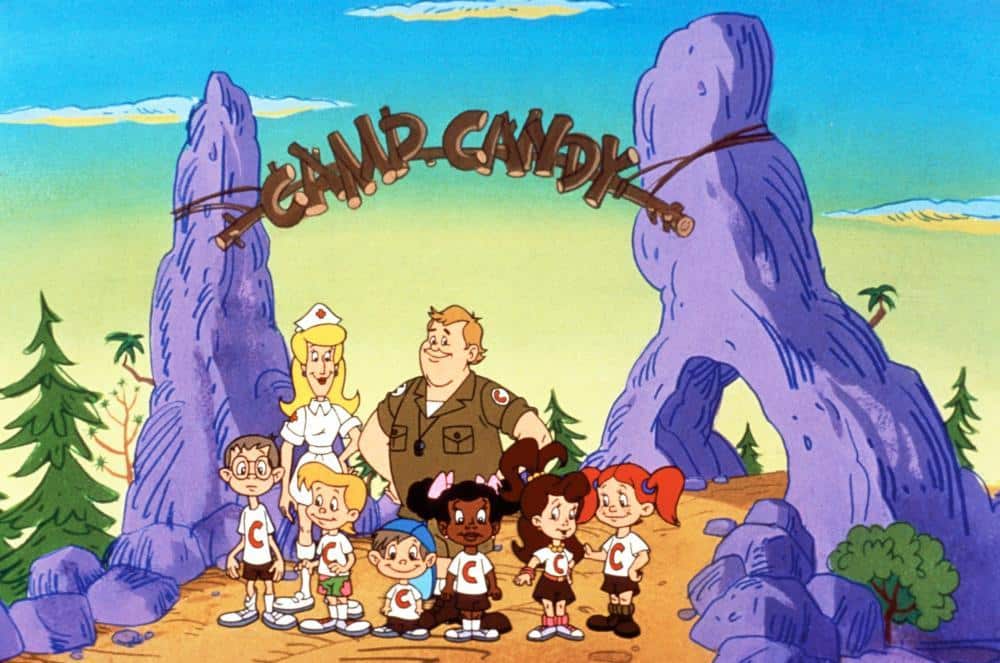
Then, as John himself would later complain during an interview about the show, “It seems almost impossible to get a story approved by NBC, but once we do, then Scott comes in and starts breaking It down. They quibble over the smallest things—the voice of a character, how the character looks, what the attitude is.”
In fact, really early on, John was so upset about the changes in the show, he said maybe they should call it Camp Pine Nuts, because he was considering stepping away from it altogether.
But, he knew I’d be on his side, at least, and wanted to give it a shot.
KLICKSTEIN: Did the show go through any other growing pains early on?
SHAW!: Yes, John and I actually wanted his camp counselor character to be more like his “Johnny LaRue” character from his time at SCTV. But maybe a bit nicer than that guy. With a twist of Phil Silvers’ Sgt. Bilko.
A schemer who’d be trying to get money or whatever it might’ve been out of whatever he was doing in the episode. But, by the end of the episode, he’d still end up feeling guilty and wanting to help the kids, more-or-less doing the right thing.
Instead of keeping the money for himself or paying back someone he owed money to, for example, he’d put it into the camp or help out a kid who needed it.
We really wanted to make it more about John’s character, so the show would be more “hip” and have more of an edge to it. It was NBC that pushed us into making it much more about the generic other characters on the show, the kids. That wasn’t our idea at all.
KLICKSTEIN: What did John ultimately think about the finished character and how it represented him onscreen?
SHAW!: It was a process to get it to where he liked it, for sure. I wasn’t given much time and only $20,000 to develop Camp Candy.
To give John various options, I spent half of that on a bunch of different cartoonists I knew so they could draw what they thought John Candy would look like as a cartoon character.
My thought was that John would look at them all and say he liked the hair from this drawing and the feet from this other drawing, and then I could put together these different elements myself into the final character.
The problem was that, despite the fact we ended up with probably hundreds of drawings, John looked at them and hated every single one of them! I could see why, because a lot of them made him look like a landslide of fat.
I go home, and my wife Judy sees I was losing my mind. So, she suggests I just draw John the way I draw myself. Like Fred Flintstone, a potato with arms and legs.
I did a drawing myself, showed it to John the next day, and he says, “That’s what I wanted all along!” And, of course, the first thing I thought was, “I could’ve paid myself the $10,000 for one drawing.”
But, it proved that he was right about wanting a fat guy to make the show, because I did understand how to portray him.
KLICKSTEIN: With both Saban and DIC onboard, along with whatever else NBC was asking for, how bogged down were you by production notes through all of this?
SHAW!: DIC really did everything. Saban just put their name on the show. And provided the music, as always. I have no idea why it was outsourced to DIC and was made into a two-studio project, because Saban did do their own animated shows, too.

KLICKSTEIN: Was DIC, known for so many of the Saturday morning cartoons we eighties and nineties kids grew up with, at least helpful to work with?
SHAW!: Saturday morning cartoons tended to look like shit, especially those from DIC, if you want the truth.
The problem was that, aside from storyboards, none of the actual animation was being done here. Most of the stuff was immediately sent overseas, usually to Asia. Sometimes a show would get sent to more than one studio, like with the Ed Grimley series that at one point was sent to three different studios in the Philippines.
You get the “final” product back like two days before it’s supposed to air, and if there’s any problems, you gotta just try to slap it together as quickly and however you can to make it right. Which was almost always impossible. Most of the time, we couldn’t fix it whatsoever.
Plus, working at DIC on Camp Candy, there’d be times when maybe we would get the episode back a little earlier from the overseas studio, and I’d ask if we could make a few last-minute fixes—but they’d tell me we couldn’t, because they still owed the studio over there money from the last series they’d done.
KLICKSTEIN: How was it working with John Candy?
SHAW!: Of all the celebrities I’ve ever worked with—and I’ve worked with a lot of celebrities over the years—John was by far the most down-to-earth person that wasn’t a cartoonist himself.
He wasn’t demanding. He was easy to work with. Just a sweet guy.
At one point, we brought our five-year-old nephew over, because he was a big fan of John’s. And, you have to remember, John wasn’t just heavy; he was also really tall. He was about 6’4. John didn’t want to scare the kid, so he got down on his hands and knees so he could talk with him face-to-face.
Being fat myself, I know how hard it can be to get back up from being on the floor like that. But John did it anyway. Right there, it showed me this guy was more interested in making this kid happy than how much trouble it would be getting back up again.
John also just liked making everything fun. Sometimes, he’d just suddenly say, “Hey, let’s go over to my house and make spaghetti!” Or he’d have little parties in the studio with a few friends, and we’d all be eating hot dogs or whatever.
We were really great friends by the end of Camp Candy.
KLICKSTEIN: You were working with John when he was working at a high-point in his film career. Did that ever cause any conflicts with production schedules?
SHAW!: He was always available for us for whatever we needed.
While he was making Nothing But Trouble, which was called something else at first, I asked him, “Is this gonna be any good?” He told me he was going to have to dress up as a giant baby covered in dirt at one point during the shoot. He also was going to dress in drag for one of the other characters he played.
John answers me, “Eh, Danny [Aykroyd, who wrote and directed the notoriously bizarre cult film] smokes too much pot.” That was his explanation for why the movie didn’t end up making much sense.
He even invited me to the set at Universal when they were shooting the musical sequence with Tupac and Digital Underground. I liked that a lot!
I actually ended up liking the movie, inasmuch as it ended up feeling kind of like underground comix. The only thing that ruined it a bit for me was Chevy Chase who looks like he wants to leave the room immediately in every scene in he’s in.
KLICKSTEIN: Speaking of music, were you around for the recording of Camp Candy’s theme song sung by John and composer Harry Nilsson?
SHAW!: I was right there in the booth while they did that. They were both smoking cigarettes like crazy. But, yeah, it was a real trip to meet Harry Nilsson, because he was always one of my favorites.
I don’t know how Harry got involved, but I can tell you that I did all the storyboards and came up with all the gags for the opening sequence of the show the song plays over.
John and Harry must’ve been friends beforehand, though, because they were having a great time together for all of that. They weren’t drinking or smoking pot or anything like that. But the sad thing was that, by that time, Harry’s voice had been destroyed already.
KLICKSTEIN: How do you view the show now when you’re looking back on it these days?
SHAW!: I’m really glad that John got a chance to do his own cartoon and that I was able to help him do that. But, it really wasn’t the show that we wanted to do.
I wish I liked it more. But, the network turned it into something other than what we had wanted to do, and it was really frustrating that it would come back from overseas and the timing would be all off and it wouldn’t be very funny. All I remember is thinking how horrifying the episodes were.
I ended up leaving DIC around the middle of the second season but stayed on as a producer working from home, because John wanted to keep me on however he could.
One of the executives who had been especially frustrating to deal with had become obsessed with the details of John’s character’s shoes. I finally said, “Are we making a show or are we selling shoes?!”
It was that kind of ridiculous control that made me walk away.
Quite honestly, if we had done it at Hanna-Barbera, I think it would’ve been a much better show.
KLICKSTEIN: Did you stay in touch with John after the show ended?
SHAW!: Yes. In fact, a couple years after doing the show, he called me over to meet at his place with John Hughes. They wanted me to direct and produce seven-minute cartoons that would go in front of every movie they made together, based around John’s characters from SCTV.
It wasn’t long after that meeting that he died.
KLICKSTEIN: In Colin Hanks’ new documentary about John, I Like Me, there were some revelations about his dealing with a lot of depression, agoraphobia, and panic attacks toward the end of his life. Did you ever see anything like that in him while you knew him?
SHAW!: There was only one time I ever saw John get angry. It was when the show went from what we had initially wanted to the more corny version it became.
And on top of that, when he came over to DIC to talk with them about what was happening, he had driven in his own car and had had some trouble in their underground parking structure. The arm-gate thing that goes up when you go inside, for some reason, kept coming down and karate-chopping his car.
He came up to talk with them about the direction of the show all mad, and said, “You know, I already got my car screwed up today, and now you’re talking about all this stuff?!” That was when he suggested maybe he wouldn’t do it and they should call it Camp Pine Nuts.
It was like something straight out of one of his movies.
KLICKSTEIN: Did you feel Hanks’ documentary capture the John that you knew and worked with?
SHAW!: I had tears in my eyes while watching it, quite honestly. I didn’t see anybody in the film saying anything I didn’t agree with. They all understood that, even if John weren’t a celebrity—if he had been a garbageman or something—he still would’ve been a guy we all would’ve really liked.
MATHEW KLICKSTEIN is a prominent pop culture historian whose interview-based books include those on such topics as: Nickelodeon, The Simpsons, and Troma Films. His Comic-Con oral history See You At San Diego from Fantagraphics, based on his six-part audio docuseries for SiriusXM, is currently being developed as a feature-length documentary by Academy Award-nominated David Permut and directed by Feels Good Man’s Arthur Jones.



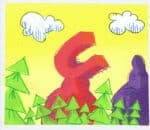
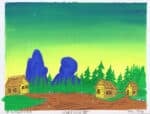

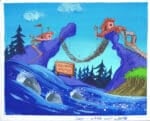

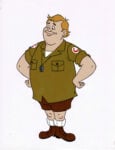
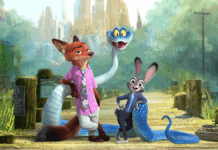

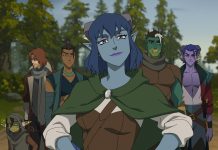






Thanks, Matthew and Scott! That’s a great interview, great story!
Awesome! Awesome! Awesome! More stuff like this please!!!!!!!!!
Yes, this was great. This blog should do more articles/interviews like this.
I’m glad that you’ve enjoyed it.
Comments are closed.